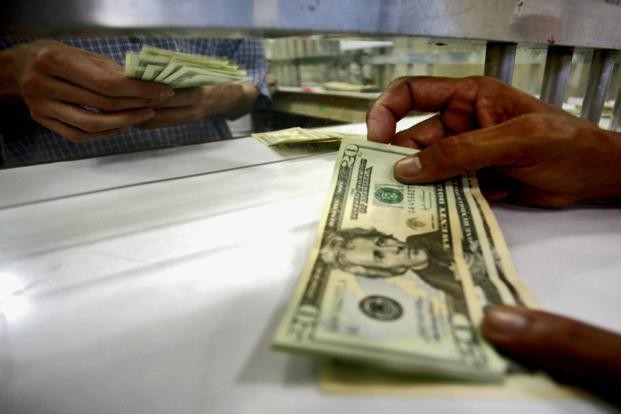China hedge fund bears look good in shorts
Post on: 3 Июнь, 2015 No Comment

Analysis & Opinion
* China hedge funds down 12.5 percent this year
* Dragon Billion, Ariose, Zeal among outliers
* Shorting China property and auto and high cash levels help
By Nishant Kumar and Vikram Subhedar
HONG KONG, Dec 21 (Reuters) — Hedge funds betting against China have earned outsized returns this year by shorting mainly property and auto stocks and positioning their portfolios to benefit from a feared hard-landing by the world’s second-biggest economy.
The winners include the $1.7 billion Dragon Billion China Fund, which returned 13.5 percent up to end-October, and the $60 million Ariose China Growth Fund, which gained 35 percent, according to sources familiar with the funds’ performance.
Zeal China Fund, managed by former Value Partners fund manager Jacky Choi, is up 7.2 percent, according to data compiled by Reuters, while China bear Hugh Hendry’s ‘China short’ fund has gained more than 52 per cent so far this year, according to a Financial Times report.
That contrasts with a near 25 percent slump in Hong Kong-listed Chinese shares up to the end of November and a 12.5 percent drop in the Eurekahedge Greater China index which is heading for its second-worst year on record.
Those who outperformed the greatest really came in with the most bearish view, said Joseph Pacini, head of alternative investments in Asia for J.P. Morgan Private Bank.
Short-sellers make money by borrowing stocks and selling them in the hope that their prices will decline, allowing them to buy the shares at a lower price and pocket the difference.
The money was made through shorting stocks in sectors such as property, auto and railroads, some opportunistic shorts in the consumer sector and being tactful with cash exposures, industry executives said.
They were viewing a hard-landing type of scenario in China and held, in some cases, 30-50 percent cash with very very low gross exposure and even negative net exposure, said Pacini, who helps wealthy clients invest in hedge funds.
TOUGH YEAR
The top Chinese firms listed in Hong Kong have plunged this year on fears of a global downturn, accounting scandals at U.S.-listed Chinese firms and a mountain of local government debt, raising worries on the health of Chinese banks.
That has left a majority of the hedge funds, which typically maintain long-biased portfolios, exposed to the fall in the share market, leading to sharp losses.
The outperformers were adept at getting their shorts right, and recognizing the limited opportunity to capitalize on market momentum, said Harvey Twomey, head of prime brokerage distribution for Deutsche Bank in the Asia-Pacific.
Put simply it was a year for staying close to shore.
China’s closed capital markets don’t offer enough ways to hedge bets. One way for foreign investors to sidestep altogether the risk of taking bets on individual stocks is to use low-cost exchange-traded funds, an increasingly popular tool when it comes to playing emerging markets.
Popular China-related ETFs include the iShares China A50 and the DB X-trackers CSI300 ETF in Hong Kong and the iShares FTSE China 25 in the United States.
Of these the first two are ‘synthetic’ ETFs that give investors access to China’s onshore markets through a swap contract rather than direct exposure while the U.S.-listed ETF invests in Hong Kong-listed shares.
HONG KONG ROUTE
The favoured route for investors to hedge bets is through Chinese stocks listed in Hong Kong which boasts one of Asia’s most developed securities borrowing and lending (SBL) markets.
SBL desks at investment banks arrange stock loans for investors looking to short-sell by tapping custodian banks that hold large quantities of shares on behalf of institutions or trying to locate supply in the banks’ own books.
Hong Kong’s Securities and Futures Commission has stood firm on allowing short-selling to continue even as peers in Asia and in Europe issued bans earlier this year in a bid to arrest heightened volatility in financial markets. The SFC has tightened disclosures around short-selling but, like in 2008, has resisted calls to ban it outright.
That and fears of a hard-landing in China in the second-half of the year combined to encourage some hedge funds to build sizeable, and eventually profitable, bearish bets with the most aggressive activity seen in China’s red-hot property sector.
With the government’s clampdown on stubbornly high prices taking a toll on transaction volumes and land sales, a key source of revenue for local governments, short-sellers positioned for continued pain for developers.
Shares in China Overseas Land & Investment, the largest mainland developer by market value, saw nearly a third of all trading in August and September on the short side. Over the third quarter, China Overseas shares fell 32 percent compared with a 21 percent drop for the Hang Seng index.
But a rush to short-sell pushed the cost of borrowing shares to extreme levels spurring sharp short-covering-driven rallies. For example, the cost of borrowing shares of China Overseas Land & Investment hit 7 percent a year in November compared with a the usual 1-2 percent.
Still, funds that got in early and managed to avoid some or all of the squeeze have easily outperformed peers and the broader market.
U.S. investors, in particular, also turned attention to Chinese corporate governance issues after a spate of allegations around Sino-Forest, Longtop Financial and Internet-related companies sparked a heavy selloff in those names.
The China fund managers spend a lot of time in channel checks and often are the first ones to discover any irregularities, Pacini of J.P. Morgan said.
Those are some bigger winners as well this year.














